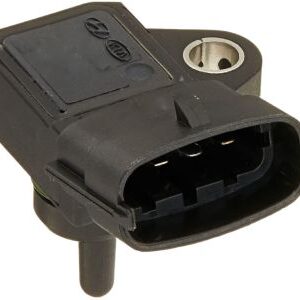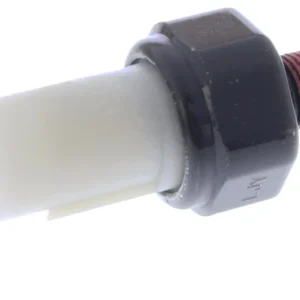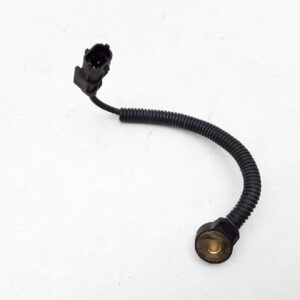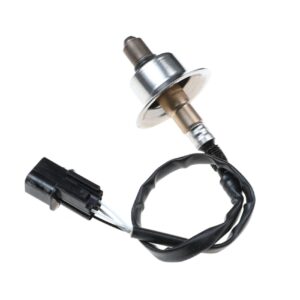**Unveiling Precision: The Crucial Role of Transmission Speed Sensors in Automotive Performance**
In the intricate symphony of automotive engineering, where every gear shift counts, one often-overlooked component silently monitors the heartbeat of the transmission—the transmission speed sensor. While engines roar with power, it’s the transmission speed sensor that tracks the rotational speed of the transmission components, providing vital feedback to the vehicle’s control systems for precise gear changes and optimal performance. Join us as we explore the significance, functionality, and importance of transmission speed sensors in the realm of automotive technology.
**Understanding the Essence: What is a Transmission Speed Sensor?**
A transmission speed sensor, also known as a turbine speed sensor or output shaft speed sensor, is an electronic device responsible for monitoring the rotational speed of the transmission output shaft or components. Its primary function is to provide real-time feedback to the vehicle’s transmission control module (TCM) or engine control unit (ECU), enabling precise control of gear shifts, torque converter lock-up, and other transmission functions.
**The Evolution of Transmission Control Systems**
In the early days of automotive engineering, transmission control systems were rudimentary, relying on mechanical linkages or hydraulic pressure for gear selection and operation. However, as vehicles became more complex and performance demands increased, the need for more sophisticated control systems grew. Transmission speed sensors emerged as a transformative technology, enabling real-time monitoring and adjustment of transmission functions for optimal performance and efficiency.
**The Significance of Speed Monitoring**
In the dynamic realm of modern driving, where smooth gear shifts and efficient power delivery are paramount, precise speed monitoring is crucial for optimizing transmission performance and fuel efficiency. Transmission speed sensors play a pivotal role in this regard, providing accurate feedback to the TCM or ECU, which adjusts transmission functions based on vehicle speed, engine load, and other factors.
**The Silent Observer: How Does a Transmission Speed Sensor Work?**
Despite its unassuming appearance, the transmission speed sensor employs sophisticated technology to fulfill its role effectively. Most transmission speed sensors utilize Hall effect or magnetic reluctance sensors to detect the rotational speed of transmission components, such as the output shaft or turbine.
As the transmission components rotate, the sensor detects changes in magnetic field or voltage, generating electrical signals that are interpreted by the TCM or ECU. Based on these signals, the control module adjusts transmission functions, such as shifting strategy, torque converter lock-up, and other parameters, to optimize performance and efficiency.
**The Unseen Benefits: Advantages of Transmission Speed Sensors**
While transmission speed sensors may operate quietly behind the scenes, their impact on vehicle performance and reliability is undeniable. Here are some key advantages:
1. **Smooth Gear Shifts:** Transmission speed sensors enable precise control of gear shifts, ensuring smooth transitions between gears and optimal power delivery.
2. **Optimized Fuel Efficiency:** Accurate speed monitoring facilitated by transmission speed sensors helps optimize transmission functions, reducing fuel consumption and emissions.
3. **Enhanced Driving Experience:** Proper transmission control results in a more responsive and enjoyable driving experience, with improved acceleration and drivability.
4. **Advanced Diagnostics:** Transmission speed sensors provide valuable diagnostic information to technicians, aiding in the diagnosis and repair of transmission issues.
**Looking Ahead: Innovations in Transmission Control Technology**
As automotive technology continues to advance, so too will the field of transmission control technology. Innovations in transmission speed sensor design, materials, and integration with other vehicle systems may lead to even more precise and efficient transmission control solutions in the future. Furthermore, as vehicles transition towards electrification and autonomous driving, transmission speed sensors will continue to play a crucial role in optimizing transmission performance and efficiency.
**In Conclusion: The Guardian of Transmission Dynamics**
In the dynamic world of automotive engineering, where every gear shift is meticulously choreographed, transmission speed sensors emerge as silent but indispensable guardians of transmission dynamics. Their unassuming presence belies their critical importance in ensuring smooth gear shifts, efficient power delivery, and overall transmission performance. So, the next time you experience the seamless operation of your vehicle’s transmission, remember to thank the unsung hero working diligently behind the scenes—the transmission speed sensor.
Only 3 left in stock (can be backordered)
$18,926.31
**Unveiling Precision: The Crucial Role of Transmission Speed Sensors in Automotive Performance**
In the intricate symphony of automotive engineering, where every gear shift counts, one often-overlooked component silently monitors the heartbeat of the transmission—the transmission speed sensor. While engines roar with power, it’s the transmission speed sensor that tracks the rotational speed of the transmission components, providing vital feedback to the vehicle’s control systems for precise gear changes and optimal performance. Join us as we explore the significance, functionality, and importance of transmission speed sensors in the realm of automotive technology.
**Understanding the Essence: What is a Transmission Speed Sensor?**
A transmission speed sensor, also known as a turbine speed sensor or output shaft speed sensor, is an electronic device responsible for monitoring the rotational speed of the transmission output shaft or components. Its primary function is to provide real-time feedback to the vehicle’s transmission control module (TCM) or engine control unit (ECU), enabling precise control of gear shifts, torque converter lock-up, and other transmission functions.
**The Evolution of Transmission Control Systems**
In the early days of automotive engineering, transmission control systems were rudimentary, relying on mechanical linkages or hydraulic pressure for gear selection and operation. However, as vehicles became more complex and performance demands increased, the need for more sophisticated control systems grew. Transmission speed sensors emerged as a transformative technology, enabling real-time monitoring and adjustment of transmission functions for optimal performance and efficiency.
**The Significance of Speed Monitoring**
In the dynamic realm of modern driving, where smooth gear shifts and efficient power delivery are paramount, precise speed monitoring is crucial for optimizing transmission performance and fuel efficiency. Transmission speed sensors play a pivotal role in this regard, providing accurate feedback to the TCM or ECU, which adjusts transmission functions based on vehicle speed, engine load, and other factors.
**The Silent Observer: How Does a Transmission Speed Sensor Work?**
Despite its unassuming appearance, the transmission speed sensor employs sophisticated technology to fulfill its role effectively. Most transmission speed sensors utilize Hall effect or magnetic reluctance sensors to detect the rotational speed of transmission components, such as the output shaft or turbine.
As the transmission components rotate, the sensor detects changes in magnetic field or voltage, generating electrical signals that are interpreted by the TCM or ECU. Based on these signals, the control module adjusts transmission functions, such as shifting strategy, torque converter lock-up, and other parameters, to optimize performance and efficiency.
**The Unseen Benefits: Advantages of Transmission Speed Sensors**
While transmission speed sensors may operate quietly behind the scenes, their impact on vehicle performance and reliability is undeniable. Here are some key advantages:
1. **Smooth Gear Shifts:** Transmission speed sensors enable precise control of gear shifts, ensuring smooth transitions between gears and optimal power delivery.
2. **Optimized Fuel Efficiency:** Accurate speed monitoring facilitated by transmission speed sensors helps optimize transmission functions, reducing fuel consumption and emissions.
3. **Enhanced Driving Experience:** Proper transmission control results in a more responsive and enjoyable driving experience, with improved acceleration and drivability.
4. **Advanced Diagnostics:** Transmission speed sensors provide valuable diagnostic information to technicians, aiding in the diagnosis and repair of transmission issues.
**Looking Ahead: Innovations in Transmission Control Technology**
As automotive technology continues to advance, so too will the field of transmission control technology. Innovations in transmission speed sensor design, materials, and integration with other vehicle systems may lead to even more precise and efficient transmission control solutions in the future. Furthermore, as vehicles transition towards electrification and autonomous driving, transmission speed sensors will continue to play a crucial role in optimizing transmission performance and efficiency.
**In Conclusion: The Guardian of Transmission Dynamics**
In the dynamic world of automotive engineering, where every gear shift is meticulously choreographed, transmission speed sensors emerge as silent but indispensable guardians of transmission dynamics. Their unassuming presence belies their critical importance in ensuring smooth gear shifts, efficient power delivery, and overall transmission performance. So, the next time you experience the seamless operation of your vehicle’s transmission, remember to thank the unsung hero working diligently behind the scenes—the transmission speed sensor.
| Weight | 0.27 kg |
|---|---|
| Warehouse | Inventory at warehouse 2 |




Get E-mail updates about our latest products and special offers.
Sensors and More is Jamaica’s ultimate online auto parts store. Established in 2020, we specialize in genuine electrical parts for Japanese, Read more…
Reviews
There are no reviews yet.